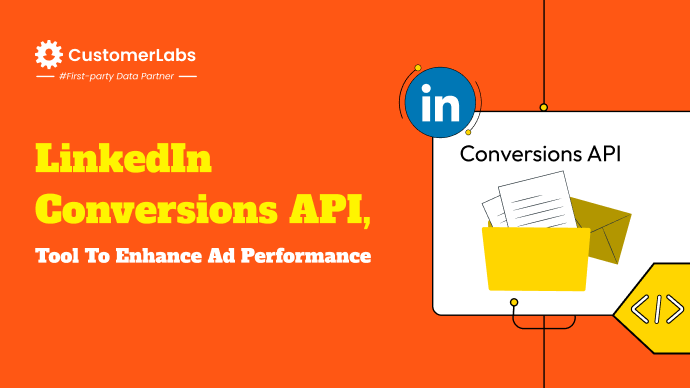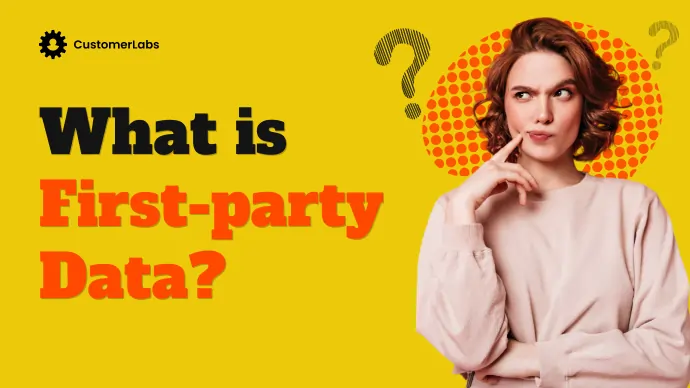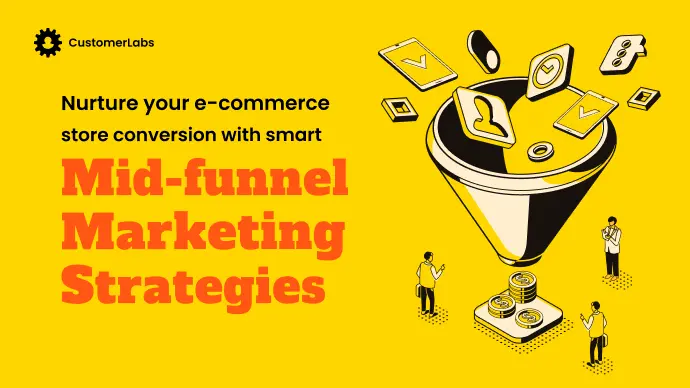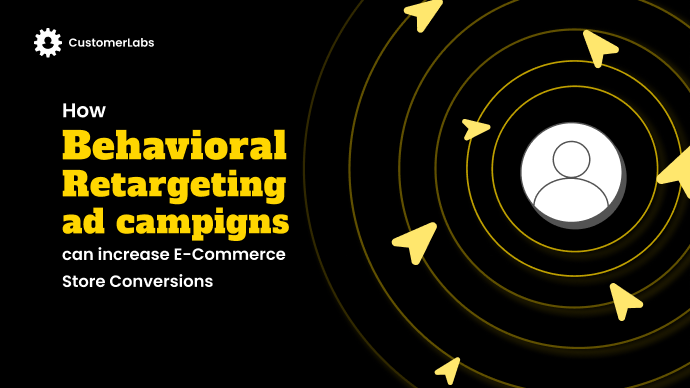
Data privacy regulations and updates such as the GDPR, CCPA, third-party cookie deprecation, etc., have raised a flag seeking more robust privacy-preserving technologies in place. Finally, LinkedIn Conversions API joins the club. LinkedIn Ads has released its Conversions API to offer a secured data connection that goes beyond cookie-tracking. LinkedIn Conversions API helps marketers improve their ad campaign performance by offering personalization along with privacy. Let’s learn more about how it works, and how you’ll get the most out of it.
LinkedIn Conversions API: The Gateway To Server Side Tracking For LinkedIn Ads
LinkedIn Conversions API is a server-side bridge connecting both online and offline data with the LinkedIn Ad platform. It helps you send your customer interactions with your business as signals to the Ad platform to give a complete picture of your customer journey. It is a privacy-preserving technology that goes beyond cookie-tracking of the user’s behavior on your website.
The cherry on the top is that LinkedIn CAPI not only syncs website data but also the lead data in the CRMs, the interactions of the users over phone calls, in-person conversions, in-store purchases by customers, etc.
Why Do You Need LinkedIn Conversions API?
Google Chrome deprecating the third-party cookie has crumbled marketers’ hearts. It was like rubbing salt into the already existing wound – GDPR, CCPA, etc. To navigate the waters of data privacy and enhance ad campaign performance, robust tools like the Conversions API that sends data from the server side without relying on cookie tracking is essential.
You need to Implement LinkedIn Conversions API to do the following:
- Sync your first-party data on the server side with the LinkedIn Ad Platform
- Mitigate signal loss caused by blocked third-party cookie-tracking
- Connect the dots of your entire customer journey to help LinkedIn Ads understand your customer better
- Merge online and offline conversion data to sync both with LinkedIn Ads
- Track different types of conversions that offer value to your business for better optimization of your ad campaign
- Track your full funnel for enhanced measurement
- Reliable and secure server-side connection to go beyond cookie-based tracking.
- Reduce your cost-per-action
- Full data control – decide how you share data with LinkedIn Ads by implementing LinkedIn Conversions API
- Strengthen your conversion tracking efforts for enhanced attribution.
- Prepare your business for a privacy-centric future.
Tip: If your business is in the healthcare or financial sector, you cannot use the Insight Tag to track the conversion events on your website. LinkedIn Conversions API comes to your aid in such cases.
How to set up the LinkedIn Conversions API?
There are two ways to set up the LinkedIn Conversions API: 1. Direct Integration 2. Partner Integration through CustomerLabs 1PD Ops or others such as Zapier or Google Tag Manager.
Direct integration of LinkedIn Conversions API
You need developer support to set up LinkedIn Conversions API and monitor it regularly. On average, setting up LinkedIn Conversions API might take at least two weeks or a maximum of four weeks. Direct integration consumes a lot of time, resources, and money.
On the other hand, the LinkedIn Conversions API setup through CustomerLabs 1PD Ops is easy, quick (just a few hours and you’ll be live), and completely no-code!
You can also upload the offline conversion data CSV file to LinkedIn Ads for offline data. However, it is not recommended for two reasons – 1. It takes around 24 to 48 hours for the audience data to populate; 2. It is not real-time automatic synchronization of data;
Tip: For better ad campaign performance, the conversion data has to be sent almost in real-time without much delay.
How LinkedIn Conversions API works alongside Insight Tag for LinkedIn Conversion Tracking
Insight Tag is a piece of code that helps you track user activity on your website, and convey LinkedIn ads who are the most important and high-intent audience. This helps LinkedIn optimize your ad campaigns and reach out to better users who have a high probability of converting.
You can track website conversions by either manually implementing Insight Tag or using the Google Tag Manager. Either way, it becomes helpless with cookie-based tracking as third-party cookies are deprecated even in Google Chrome starting in 2024. (Safari, Firefox, and other browsers have already deprecated third-party cookies).
Also, healthcare and finance websites cannot use Insight Tag.
LinkedIn Conversions API comes as a savior that doesn’t rely on cookie-based conversion tracking to track website conversions like the Insight Tag does.
However, as a best practice, you need to install the Insight Tag with enhanced conversion tracking alongside LinkedIn CAPI. Enable enhanced conversion tracking in settings of ‘manage Insight Tag’. Insight Tag conversions also allow you to use first-party cookies for certain conversion actions on your website such as page load or event.
Note: LinkedIn Conversions API and 1P domain tracking help you improve your measurement and conversion accuracy! Read More
Deduplication in LinkedIn Ads Conversions – Insight Tag + CAPI event
When the same event is sent to LinkedIn Ads – once through Conversions API and then also through Insight Tag, LinkedIn deduplicates it by using the event ID as a reference and counts only the Insight Tag conversion event in reporting. This is because LinkedIn will be able to better attribute when the event is received through Insight Tag, according to LinkedIn.
Insight Tag goes against the user’s privacy as it is cookie-based tracking. Therefore, to provide a privacy-preserving way of data collection to your users, it is recommended to use LinkedIn Conversions API to send all the events to LinkedIn Ads.
Check the effectiveness of deduplication by checking the event count of Insight Tag and CAPI. Insight Tag will have higher event counts if the deduplication is working effectively.
How data is handled in LinkedIn Conversions API
LinkedIn has clearly mentioned that no data will be saved beyond 180 days. Therefore, the maximum time frame your conversion data stays with LinkedIn is 6 months. So, LinkedIn Ads is still not your data host. It is just used to run ad campaigns.
To collect and store your customer data in compliance with data privacy regulations, choose a 1PD Ops (First Party Data Ops). 1PD Ops gives you full control over how you handle your data.
All the first-party data collected from the users is secure as it is sent on the server side through LinkedIn Conversions API. To provide an extra layer of security, all the email IDs are hashed with SHA256.
How To Know If My LinkedIn Conversions API is set up correctly?
To check if Conversions API is set correctly on LinkedIn Ads, you need to sign in to the campaign manager, navigate to the right account, and go to analyze > Click on conversion tracking.
If the status shows green, it means LinkedIn received data in the last 3 days and is active. If it’s gray, then it means there is no recent activity in the last 4 to 7 days. Red has two meanings – 1. There’s no data sent to LinkedIn for more than 7 days; 2. Waiting for data from Conversions API integration or the Insight Tag did not detect any activity on the website.
For Conversions API, there is a high chance that it might show a ‘poor signal’. It is for this reason that the data synced with LinkedIn has a low success rate of matching the event to the profile.
Improve your signal quality using LinkedIn Conversions API
To improve the LinkedIn Ads signal quality, LinkedIn recommends you to send as many parameters as possible for every event so that it can match that event to the profile in its database.
LinkedIn currently accepts only a few user parameters – email, first-party cookie click ID, first name, last name, company name, Job title, country, lead gen form ID, ACXIOM_ID, and ORACLE_MOAT_ID
Hash the email ID using SHA256.
The lead gen form ID is generated automatically by LinkedIn when a user submits a Lead Gen Form inside LinkedIn Ads. You will find it when you download the list of leads received. Sync this to help LinkedIn find the user without the need for any email ID, name, job, or any other information.
The first-party cookie click ID is the li_fat_id and is also called the LINKEDIN_FIRST_PARTY_ADS_TRACKING_UUID.
Best Practices For Using LinkedIn Conversions API
- Setup LinkedIn CAPI and Insight Tag as a couple for better results
- Enable enhanced conversion tracking, send li_fat_id, to enable first-party cookie tracking and help LinkedIn fill the gap in the customer journey.
- Adjust the conversion window depending on your sales cycle and reporting preferences. Ideally, you have the option to choose a 1-day, 7-day, 30-day, or 90-day window.
- Have 90-day click and 90-day view for lead generation and 30-day click and 7-day view attribution for website conversions (eCommerce).
- LinkedIn has two attribution models – last-touch each campaign and last-touch last campaign. Use last-touch each campaign for better attribution and understanding of every campaign.
- Link your conversions to every campaign to get a clear picture of what’s performing. LinkedIn will track only those conversions which are connected with your campaigns.
Is Conversions API A Better Solution?
Our clients used Meta Conversions API to send the data to Meta on the server side. It has given them exemplary results boosting their event match quality, leading to higher match rates and eventually incremental revenue.
For instance, Meta was able to match only 25 to 30% of the users whereas we were able to match around 80% and beyond with event match quality good/great (>5/10).
Conversions API is a privacy-compliant solution that solely relies on first-party data, the future of cookie-less advertising. Therefore, just like how Meta Conversions API has proven to be fruitful, you can expect LinkedIn Conversions API to bore fruits for your business.
Benefits Of LinkedIn Conversions API
Retargeting
Retargeting is a powerful technique to reduce your cost per purchase. It is because when you retarget, you are reaching out to the audience who have already interested in your product or service. Therefore, retargeting helps you optimize your ad spend by targeting the right audience. When you sync your custom audience with LinkedIn, it matches these audiences with the profiles in its database. Once matched, these audience segments become matched audiences who can be used to retarget with personalized messaging based on their behavior.
Train Ad Algorithm About Valuable Audience
Sending first-party audience data to LinkedIn through Conversions API helps LinkedIn learn about your user’s journey, thus helping it identify which audiences are valuable and which are not. The conversion events tracked on your website give a holistic view of your audience to LinkedIn. Train the ad algorithm with this conversion data to enhance your ad campaign performance by offering personalization while preserving the user’s privacy.
Power Your Ad Campaigns
Various types of conversion data sent through Conversions API help you optimize for conversion events that are of high value to your business. Track your full funnel by putting together online and offline conversion data for LinkedIn to measure the performance of campaigns across your customer journey.
Reliability With High Performance
LinkedIn Conversions API provides a reliable and secure connection while you optimize cost per action for your ad campaigns as it does not use cookie-based tracking.
Full Control Over Data
With Conversions API, you decide which data to collect and which data not to. Send the data that you think is in compliance with your privacy policy to offer your users complete trust, making your data truly first-party data. Businesses in the healthcare industry like hospitals, pharmaceuticals, and the finance industry like mutual funds, are in much need of solutions like LinkedIn Conversions API.
Conclusion
LinkedIn Conversions API is a boon for marketers in the cookieless future as third-party cookies are being crumbled. It acts as a bridge between your data and the LinkedIn ad platform to send all your customer interactions in a privacy-centric way seamlessly. By implementing Conversions API the right way on LinkedIn, marketers like you can leverage the benefit of this advanced privacy-preserving technology that offers personalization while offering complete privacy to the users. With the unexpected changes in data privacy on the rise, LinkedIn’s CAPI emerges as a powerful weapon for businesses to optimize ad campaign performance.
Check our documentation to check how to sync audience to LinkedIn Ads using CustomerLabs 1PD Ops.






